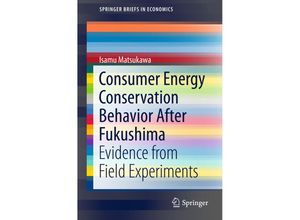This book presents an in-depth empirical analysis of consumer response to alternative policies
for energy conservation. Its main focus is on innovative policy instruments that have attracted
increasing attention from academics and energy conservation practitioners alike: critical peak
pricing conservation requests in-home displays and home energy reports. The book
investigates the effects of these policy instruments on residential demand for electricity. The
data is drawn from a series of randomized field experiments for the years 2012-2013 in Japan
where serious concerns about power shortages have emerged in the wake of the nuclear disaster
in Fukushima. By applying econometric techniques to the quantitative analysis of residential
power consumption the book demonstrates how consumers respond to innovative instruments for
energy conservation. It also offers new perspectives on how these instruments can be used more
effectively and explores the potential for their practical implementation. This highly
informative book is essential reading for energy specialists in both academic and professional
contexts.

